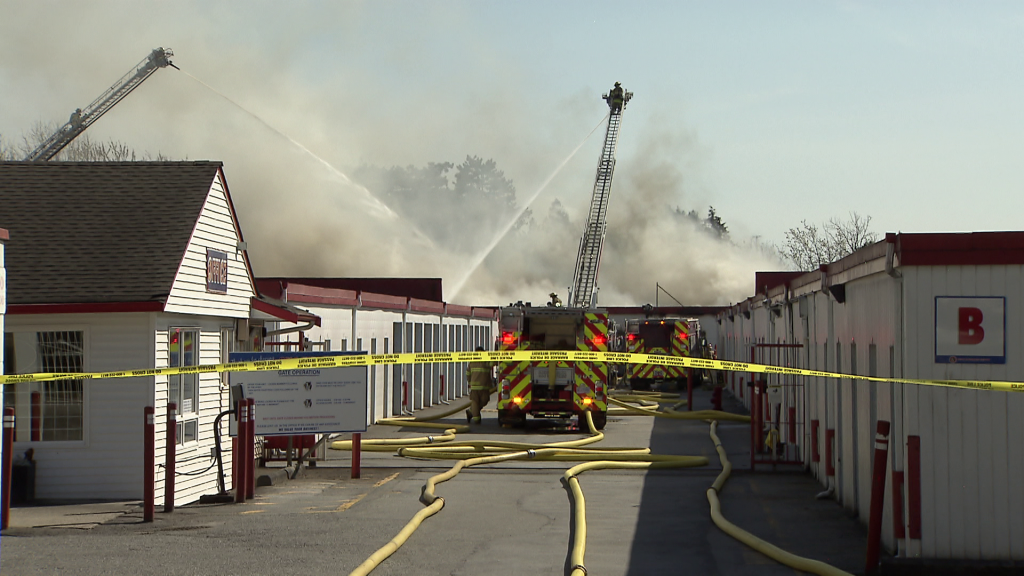B.C. seniors’ advocate calls for LTC overhaul to even out inequities
Posted September 25, 2023 4:30 pm.
Last Updated September 25, 2023 4:31 pm.
All long-term care facilities in B.C. are not created equal, according to the province’s seniors’ advocate, whose latest report says not-for-profit centres have been offering more care than for-profit facilities, using the same amount of money.
In Billions More Reasons to Care, the Office of the Seniors Advocate’s (OSA) report, Isobel Mackenzie says while some progress has been made, massive inequities remain, despite an influx of money and initiatives throughout the COVID-19 pandemic.
“Not-for-profit facilities delivered 93,000 hours more of direct care than they were funded to deliver and for-profits delivered 500,000 hours less than they were funded to deliver in 2021/22,” the OSA report findings, released Monday, show.
Comparing data from the reporting period between 2017 to 2022, Mackenzie’s findings detail that non-profit homes spent 25 per cent more on direct care and 27 per cent more on indirect care than for-profit centres.
She adds for-profit centres spent 66 per cent “more per bed on building costs than not-for-profit facilities,” and profited seven times more than non-profit facilities.
Mackenzie says for-profit centres’ profits went up 113 per cent.
She notes there’s pushback on changing the status quo.
“We need to understand that, in order to make this equitable, somebody, or a group of people, are going to make a lot less money than they’ve been making,” Mackenzie said at a news conference Monday.
According to the OSA, direct care staffing costs include nurses, care aids, care workers such as physical therapists, social workers, dieticians, and more. Per Ministry of Health guidelines, residents in long-term care are expected to “receive, on average, at least 3.36 hours of direct care daily.”
“We know, and my office reports on, how many funded hours of care each facility receives from the health authority. That’s where we’ve gotten to basically almost everybody at 3.36. Whether they’re delivering those hours or not is a different issue and is not reported on an annual basis,” Mackenzie said.
The advocate says in the report that while there have clearly been efforts to improve long-term care, there are underlying issues that prevent the investment made by the province from making progress.
The report also shows “distinct patterns of spending” depending on whether a facility is run by a for-profit company or by a not-for-profit society.
Mackenzie says what’s needed is transparent reporting across the board, and mandating that funding for direct care is only spent on just that. She says this is currently not happening at for-profit centres.
OSA data ‘highly questionable,’ says head of BC Care Providers Association
The findings are being questioned by some, including Terry Lake, the CEO of the BC Care Providers Association (BCCPA), which represents both for-profit and non-profit facilities.
He disputes the data being used.
“This data, I think, is highly questionable. It was done … during COVID, and, in fact, I can tell you, the financials from that year are not even closed out. We have operators who have not been paid the extra overtime and Infection Prevention and Control costs from 2021-22. So I really don’t know how she’s able to come up with these figures. So I question the validity of the numbers,” he told CityNews Monday.
Lake says members agree that change is needed and is being worked on. However, he notes the work is complex and will take time.
“For-profit and not-for-profit members that we represent agree that a new funding formula is needed, that is equitable, that is transparent, and, above all, is sustainable,” he said.
Meanwhile, B.C. Health Minister Adrian Dix says what’s important above anything else is that LTC residents are getting the care they need.
He tells CityNews work continues to address gaps previously identified.
“What we’re doing is focusing on improving standards and investment in long-term care, and most importantly, meeting those standards, in addition to these issues of monitoring and accounting, is ensuring that we have the staff for them,” Dix said.
“We’re going to continue to work with (Mackenzie) and with Terry Lake and everyone else because I think it’s that working together that was so effective for us during the pandemic.”
LTC residents, health workers ‘paying the price’: Hospital Employees’ Union
According to the Hospital Employees’ Union (HEU), the OSU report paints a very critical picture.
“This study shows that contracted care home operators — and especially for-profit operators — are diverting public funds away from the front line to their bottom line,” said HEU secretary-business manager Meena Brisard.
“Care home residents and health care workers are paying the price.”
The HEU says the findings presented Monday stress the urgent need for “fundamental reforms” to the LTC system.
That, the union notes, includes restoring standard wages, benefits, and working conditions, as was promised during the 2020 election.
“This government has inherited a long-term care system that is fragmented, lacking in transparency and failing to deliver on the common working and caring conditions that our seniors and our members deserve,” said Brisard. “But the solutions are also clear — greater transparency to ensure public funding goes to frontline care and common labour standards to promote a level-playing field for workers and residents.”








